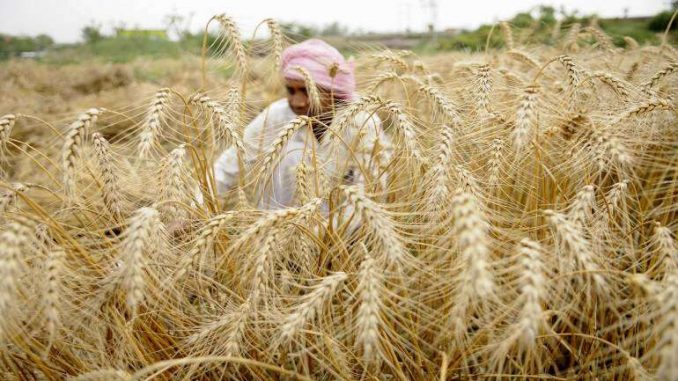
New Delhi: The Covid-19 pandemic has forced a lockdown in India and other countries. The agriculture sector in Punjab — India’s food bowl — is facing multiple challenges, which in turn will affect the entire country. With most of the economic activities halted, the sector is witnessing disruption of production, dysfunctional markets and supply chains and a threat to livelihood as income and employment opportunities shrink.
The crisis has hit harvesting and threshing of wheat. Wheat harvesting is completely mechanised through combine harvesters and requires only 1.6 man-days per hectare, three-fourth of which is casual labour. Harvesting of 35.65 lakh hectares will require 41 lakh man-days, which can be managed easily by employing local casual labour — which has lost work during the current crisis — and involving family members. Agricultural wages may increase and wage workers may shift from the construction sector to the farm sector in the near future. The state government should ensure timely availability of harvesting machines and smooth procurement of wheat, following social distancing norms. An effective mechanism involving line departments, procurement agencies, commission agents and village panchayats and multi-step procurement as envisaged by the state government will help in eliminating farmers’ harvesting and procurement-related problems.
The next challenge will be the sowing of cotton, maize and the transplantation of paddy, which will require 495 lakh man-days of casual labour, a jump of almost 12 times when compared to the harvesting season. Most of the labour will be required for paddy transplantation and a spike in labour demand may give rise to a sharp increase in wages. It may cause a delay in paddy transplantation, decline in area under paddy and an increase in the area under basmati and cotton. The area under summer vegetables may also fall as these are labour-intensive crops. The state government should plan to promote the use of mechanical paddy transplanters; their timely repair and availability will help in coping with labour shortage.
Although free movement of farm machinery has been allowed, the cost of harvesting operations may rise. There is a need to ensure smooth functioning of machinery rental services through farmers’ cooperatives and private service providers.
As seed supply chains of cotton are dominated by private suppliers, adequate and timely availability of seeds should be ensured. The state must also check unfair rise in seed prices of cotton. The government should constitute a team comprising officials of the Punjab Agricultural University (PAU) and the Department of Agriculture, and seed suppliers to project the demand for all types of seeds.
The involvement of key stakeholders in supply chains of fertilisers and agro-chemicals will address the issues related to these inputs. The state government should coordinate with the Centre on the timely availability of fertilisers to Punjab’s farmers. The supply of feed and fodder will remain affected, raising the costs, squeezing the profits and reducing the production of dairy, poultry and related products. Also, access to formal credit may fall. Wage workers and marginal farmers, with greater dependence on informal credit, will be hit more severely.
A fall in agricultural prices and a rise in costs will result in lower farm income. The non-farm income will also drop. Though demand for wage work in agriculture will increase, it will fall substantially in other sectors with an overall decline in wage employment. The food consumption of the rural poor will be hit hard. To alleviate such distress, time-bound food coupons for poor, unemployment allowances and employment generation through MGNREGA should be explored.
It’s also vital to strengthen village panchayats, their capacity building and greater involvement in tackling the crisis at the local level. It is the best time to build viable partnerships involving farmer producer organisations, self-help groups, farmers’ cooperatives and other local institutions to strengthen the value networks within the state. Such models can then be replicated on a larger scale.
Courtsy: The Tribune

Leave a Reply